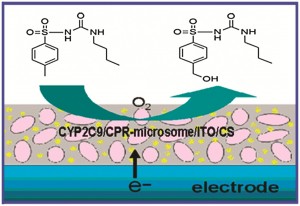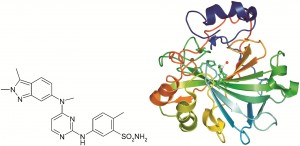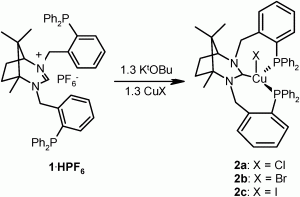 Perhaps the most well-known applications of organometallics in catalysis are the Ziegler–Natta catalysts which are used to generate polymers; the catalysts are made up of mixtures of transition metal halides and organo-aluminium complexes. Karl Ziegler and Giulio Natta were awarded the 1963 Nobel Prize in Chemistry for their discovery and development of the catalysts, which today are the most commonly used catalysts for the manufacture of polythene.
Perhaps the most well-known applications of organometallics in catalysis are the Ziegler–Natta catalysts which are used to generate polymers; the catalysts are made up of mixtures of transition metal halides and organo-aluminium complexes. Karl Ziegler and Giulio Natta were awarded the 1963 Nobel Prize in Chemistry for their discovery and development of the catalysts, which today are the most commonly used catalysts for the manufacture of polythene.
The esteemed history of organometallics is not to be under-estimated and includes Grignard’s reagents, the Heck reaction, Schrock catalysts, Grubbs’ catalysts and the Suzuki Coupling to name just a few. Organometallic compounds have revolutionised science and industry and to keep you up to date with the latest break-through research being made across all areas of organometallics in catalysis, we have made this cross-journal article collection free until 26th September.
Organometallic hydrogen transfer and dehydrogenation catalysts for the conversion of bio-renewable alcohols, Andrew C. Marr, Catal. Sci. Technol., 2012, 2, 279-287
Synthesis of functionalized thiophenes and oligothiophenes by selective and iterative cross-coupling reactions using indium organometallics, M. Montserrat Martínez, Miguel Peña-López, José Pérez Sestelo and Luis A. Sarandeses, Org. Biomol. Chem., 2012, 10, 3892-3898
Homogeneous and heterogeneous catalysts for multicomponent reactions, Maria José Climent, Avelino Corma and Sara Iborra, RSC Adv., 2012, 2, 16-58
Amine directed Pd(II)-catalyzed C–H bond functionalization under ambient conditions, Benjamin Haffemayer, Moises Gulias and Matthew J. Gaunt, Chem. Sci., 2011, 2, 312-315
Metal–ligand bifunctional activation and transfer of N–H bonds, Kilian Muñiz, Anton Lishchynskyi, Jan Streuff, Martin Nieger, Eduardo C. Escudero-Adán and Marta Martínez Belmonte, Chem. Commun., 2011, 47, 4911-4913
Symmetrical and unsymmetrical pincer complexes with group 10 metals: synthesis via aryl C–H activation and some catalytic applications, Jun-Long Niu, Xin-Qi Hao, Jun-Fang Gong and Mao-Ping Song, Dalton Trans., 2011, 40, 5135-5150
Well-defined copper(I) complexes for Click azide–alkyne cycloaddition reactions: one Click beyond, Silvia Díez-González, Catal. Sci. Technol., 2011, 1, 166-178
Access to chiral α-bromo and α-H-substituted tertiary allylic alcohols via copper(I) catalyzed 1,2-addition of Grignard reagents to enones, Ashoka V. R. Madduri, Adriaan J. Minnaard and Syuzanna R. Harutyunyan, Org. Biomol. Chem., 2012, 10, 2878-2884
Catalytic versus stoichiometric dehydrocoupling using main group metals, Robert J. Less, Rebecca L. Melen and Dominic S. Wright, RSC Adv., 2012, 2, 2191-2199
An improved catalyst architecture for rhodium(III) catalyzed C–H activation and its application to pyridone synthesis, Todd K. Hyster and Tomislav Rovis, Chem. Sci., 2011, 2, 1606-1610
 Continuous flow organometallic catalysis: new wind in old sails, Ulrich Hintermair, Giancarlo Franciò and Walter Leitner, Chem. Commun., 2011, 47, 3691-3701
Continuous flow organometallic catalysis: new wind in old sails, Ulrich Hintermair, Giancarlo Franciò and Walter Leitner, Chem. Commun., 2011, 47, 3691-3701
Organometallic reactivity: the role of metal–ligand bond energies from a computational perspective, Natalie Fey, Benjamin M. Ridgway, Jesús Jover, Claire L. McMullin and Jeremy N. Harvey, Dalton Trans., 2011, 40, 11184-11191
An introduction to X-ray absorption spectroscopy and its in situ application to organometallic compounds and homogeneous catalysts, Ryan C. Nelson and Jeffrey T. Miller, Catal. Sci. Technol., 2012, 2, 461-470
Palladium-catalyzed cross-coupling reactions of organogold(I) phosphanes with allylic electrophiles, Miguel Peña-López, Miguel Ayán-Varela, Luis A. Sarandeses and José Pérez Sestelo, Org. Biomol. Chem., 2012, 10, 1686-1694
Transition metal complexes with strong absorption of visible light and long-lived triplet excited states: from molecular design to applications, Jianzhang Zhao, Shaomin Ji, Wanhua Wu, Wenting Wu, Huimin Guo, Jifu Sun, Haiyang Sun, Yifan Liu, Qiuting Li and Ling Huang, RSC Adv., 2012, 2, 1712-1728
Mechanism of the gold-catalyzed cyclopropanation of alkenes with 1,6-enynes, Patricia Pérez-Galán, Elena Herrero-Gómez, Daniel T. Hog, Nolwenn J. A. Martin, Feliu Maseras and Antonio M. Echavarren, Chem. Sci., 2011, 2, 141-149
A dual organic/organometallic approach for catalytic ring-opening polymerization, Estefanía Piedra-Arroni, Pierre Brignou, Abderrahmane Amgoune, Sophie M. Guillaume, Jean-François Carpentier and Didier Bourissou, Chem. Commun., 2011, 47, 9828-9830
Half-titanocenes for precise olefin polymerisation: effects of ligand substituents and some mechanistic aspects, Kotohiro Nomura and Jingyu Liu, Dalton Trans., 2011, 40, 7666-7682
Exploring the versatility of a bis(phosphinimine) pincer ligand: effect of sterics on structure and lactide polymerization activity of cationic zinc complexes, Craig A. Wheaton and Paul G. Hayes, Catal. Sci. Technol., 2012, 2, 125-138
Enantioselective Friedel–Crafts alkylation of indole derivatives catalyzed by new Yb(OTf)3-pyridylalkylamine complexes as chiral Lewis acids, Guillaume Grach, Aurelia Dinut, Sylvain Marque, Jérôme Marrot, Richard Gil and Damien Prim, Org. Biomol. Chem., 2011, 9, 497-503
Mononuclear and dinuclear complexes of manganese(III) and Iron(III) supported by 2-salicyloylhydrazono-1,3-dithiane ligand: synthesis, characterization and magnetic properties, Weiwei Zuo, Vitor Rosa, Clarisse Tourbillon, David Specklin, Cheaib Khaled, Mohamedally Kurmoo and Richard Welter, RSC Adv., 2012, 2, 2517-2526
Design and Preparation of New Palladium Precatalysts for C-C and C-N Cross-Coupling Reactions, Nicholas Bruno, Stephen Buchwald and Matthew T Tudge, Chem. Sci., 2012, Accepted Manuscript
Negishi cross-coupling of secondary alkylzinc halides with aryl/heteroaryl halides using Pd–PEPPSI–Ipent, Selçuk Çalimsiz and Michael G. Organ, Chem. Commun., 2011, 47, 5181-5183
Catalytic dehydrogenation of dimethylamine borane by group 4 metallocene alkyne complexes and homoleptic amido compounds, Torsten Beweries, Sven Hansen, Monty Kessler, Marcus Klahn and Uwe Rosenthal, Dalton Trans., 2011, 40, 7689-7692
Bimetallic aluminium(acen) complexes as catalysts for the synthesis of cyclic carbonates from carbon dioxide and epoxides, Michael North and Carl Young, Catal. Sci. Technol., 2011, 1, 93-99
Planar chiral (η5-cyclohexadienyl)- and (η6-arene)-tricarbonylmanganese complexes: synthetic routes and application, Francoise Rose-Munch and Eric Rose, Org. Biomol. Chem., 2011, 9, 4725-4735
 Iron-catalysed reduction of carbonyls and olefins, Bryden A. F. Le Bailly and Stephen P. Thomas, RSC Adv., 2011, 1, 1435-1445
Iron-catalysed reduction of carbonyls and olefins, Bryden A. F. Le Bailly and Stephen P. Thomas, RSC Adv., 2011, 1, 1435-1445
Palladium-catalyzed selective oxidative olefination and arylation of 2-pyridones, Yuye Chen, Fen Wang, Aiqun Jia and Xingwei Li, Chem. Sci., 2012, Advance Article
Hydrogenation of imino bonds with half-sandwich metal catalysts, Chao Wang, Barbara Villa-Marcos and Jianliang Xiao, Chem. Commun., 2011, 47, 9773-9785
Rational design of diphosphorus ligands – a route to superior catalysts, Jason A. Gillespie, Deborah L. Dodds and Paul C. J. Kamer, Dalton Trans., 2010, 39, 2751-2764
For even more articles, take a look at the Dalton Transactions Themed Issue d0 organometallics in catalysis or browse through over 30 RSC Journals covering topics across the chemical sciences.
You can also follow your favourite publications on twitter and sign up to the e-alert service!




















